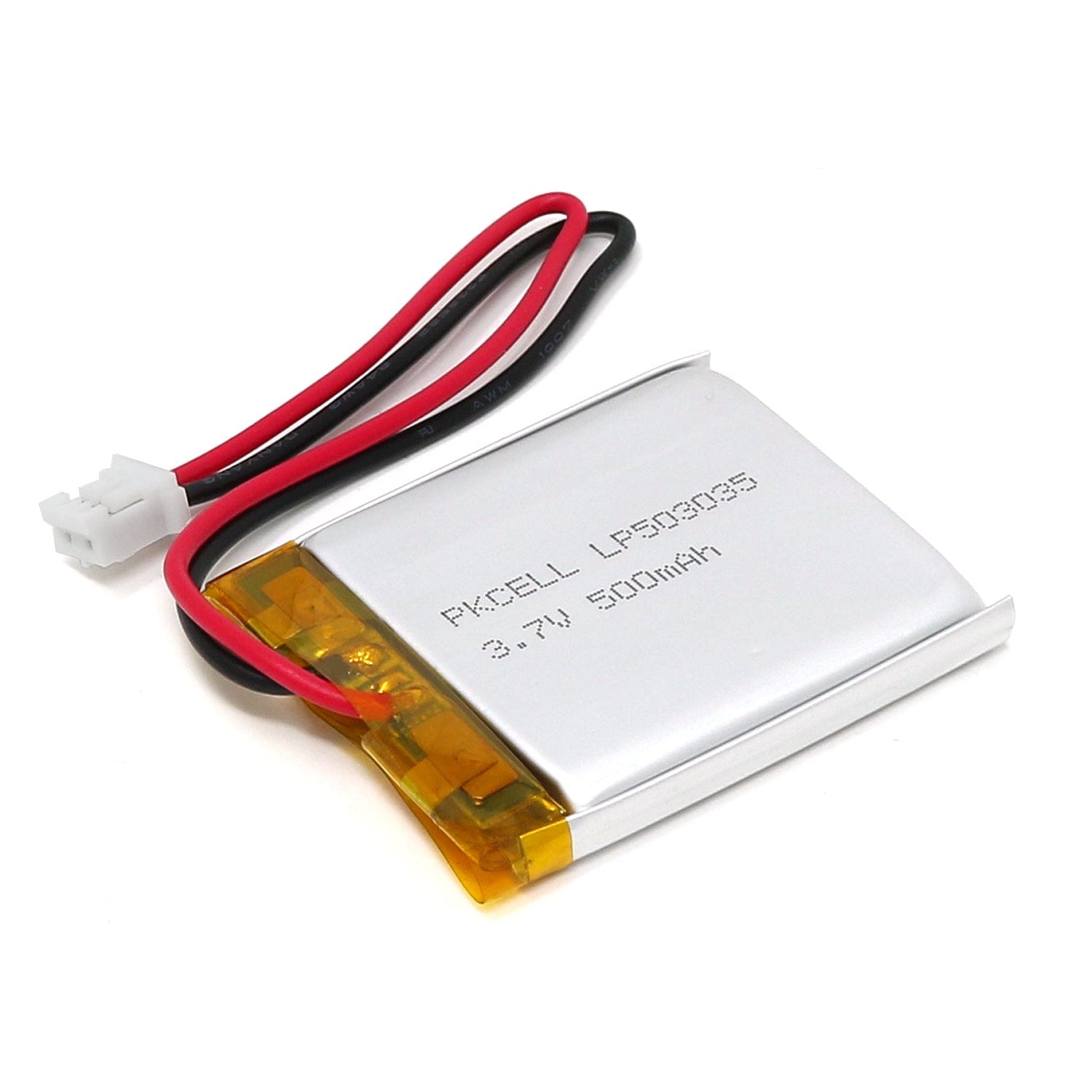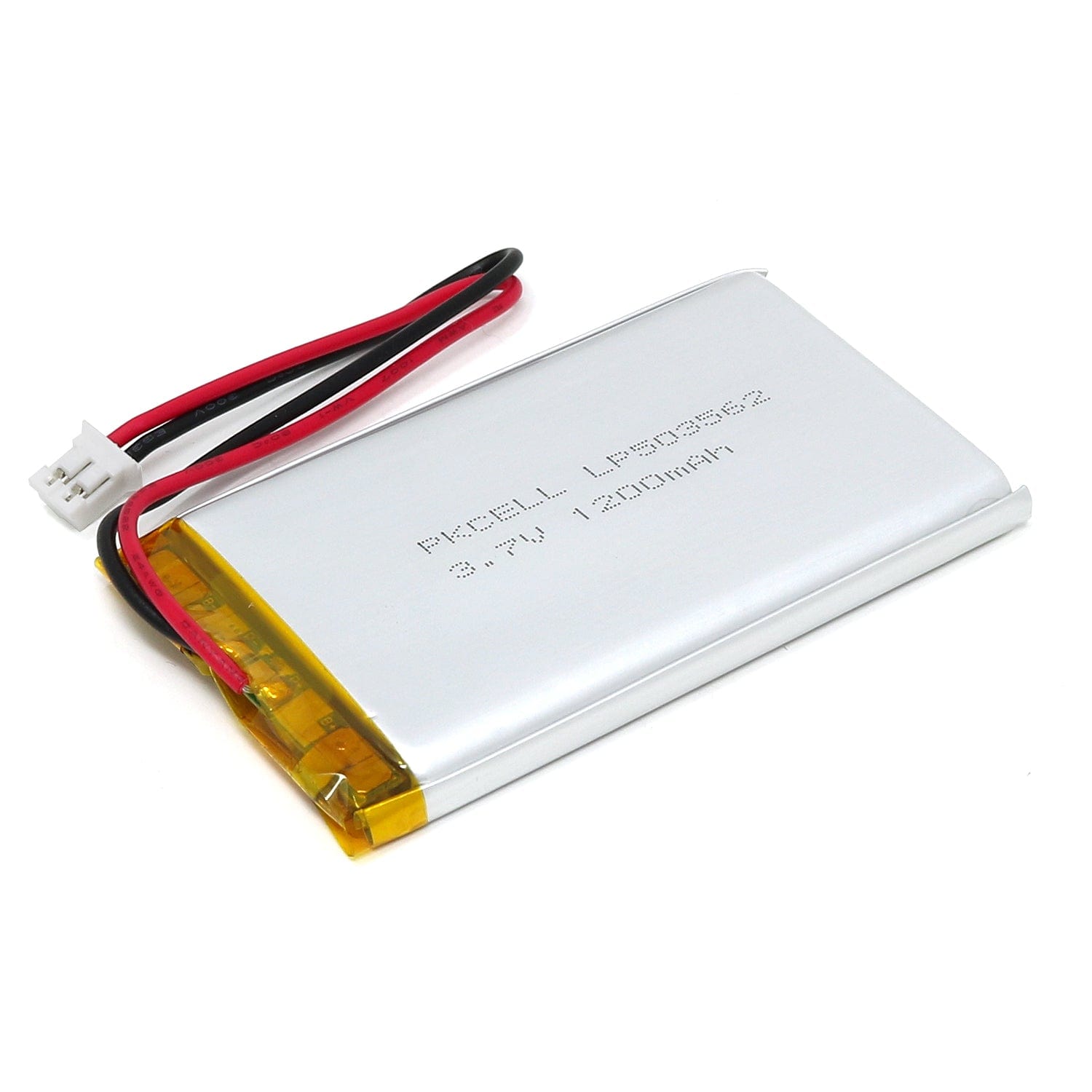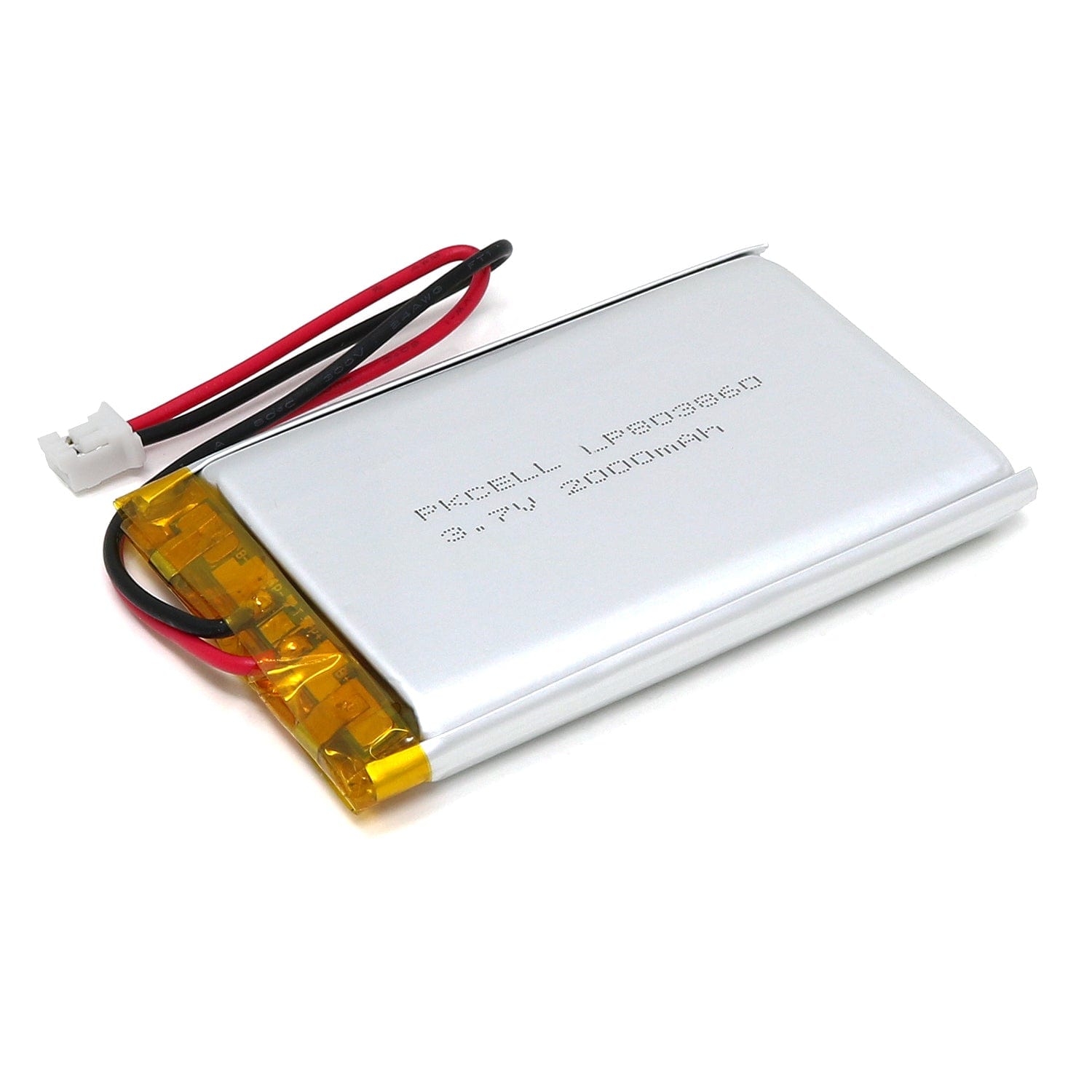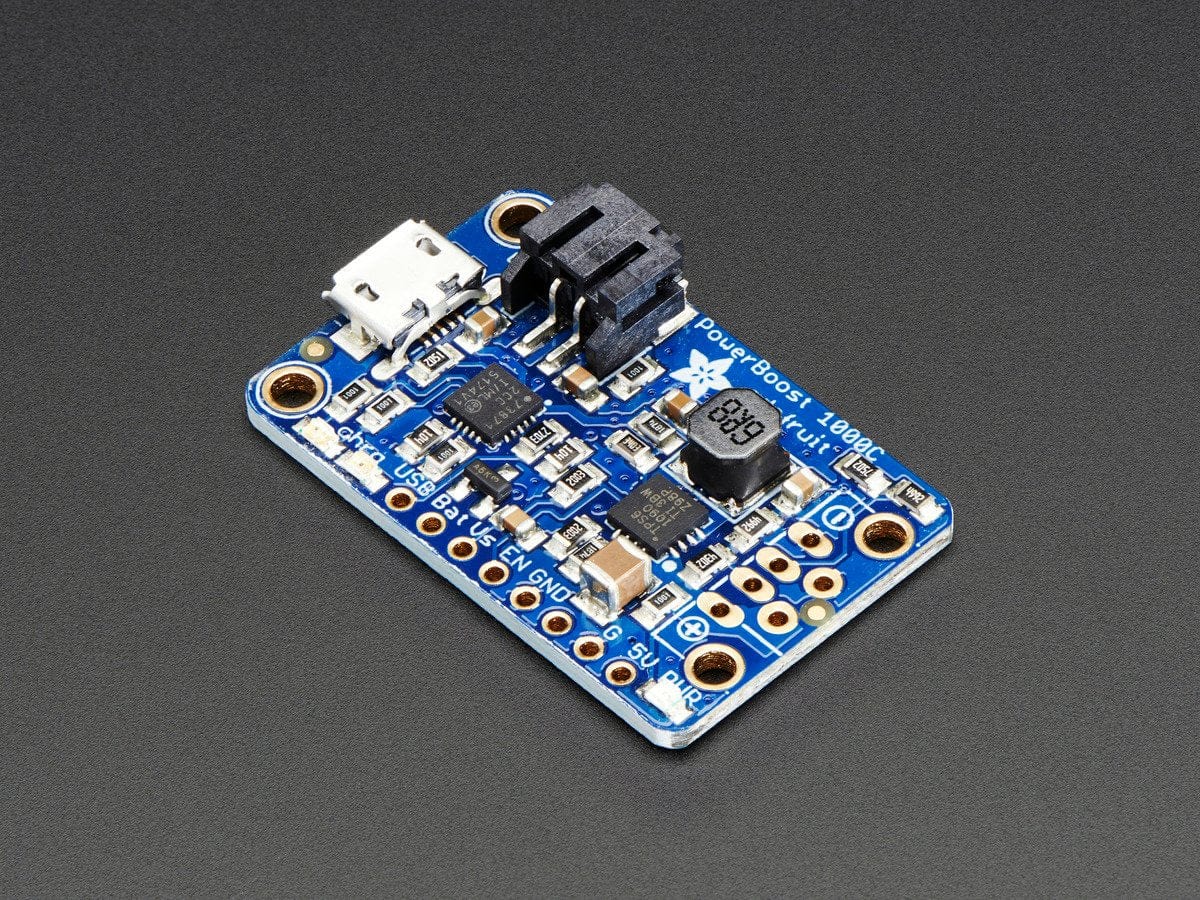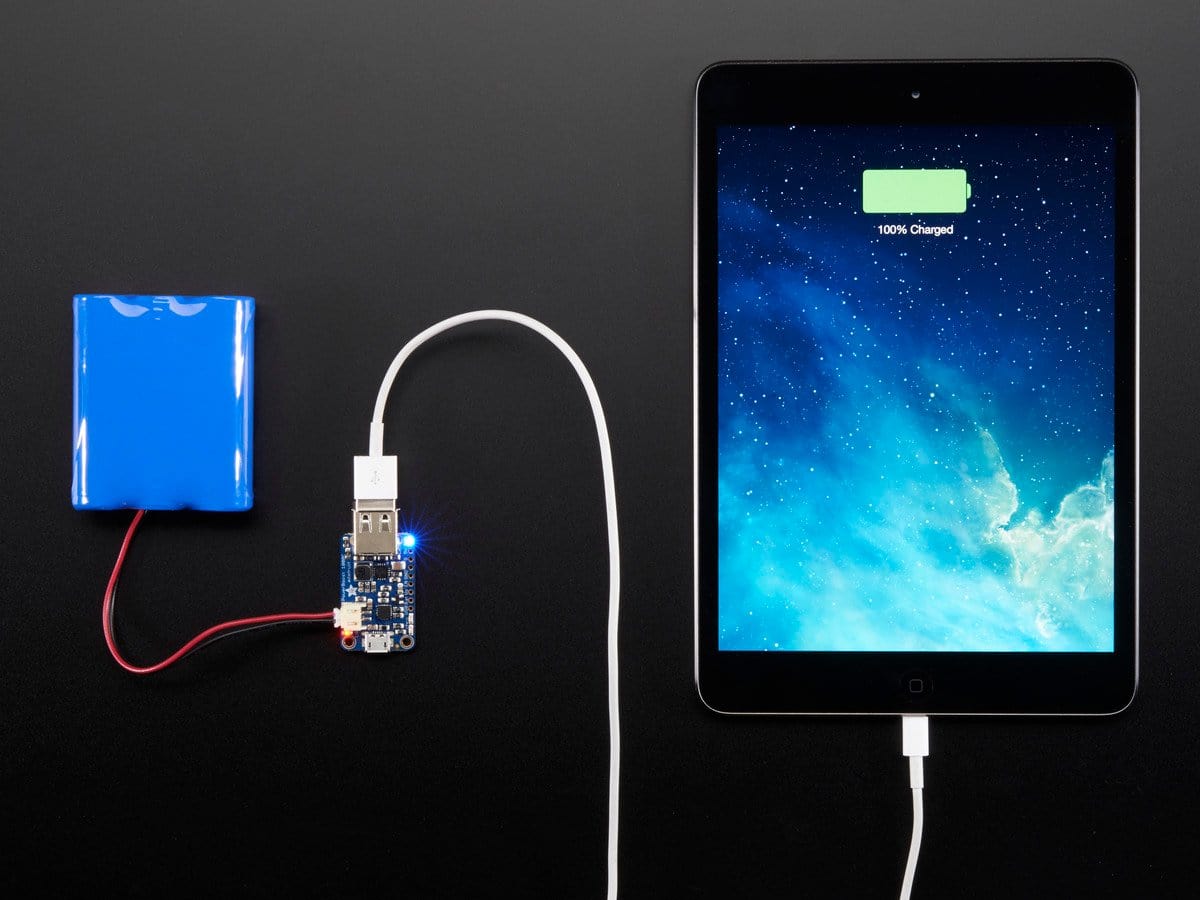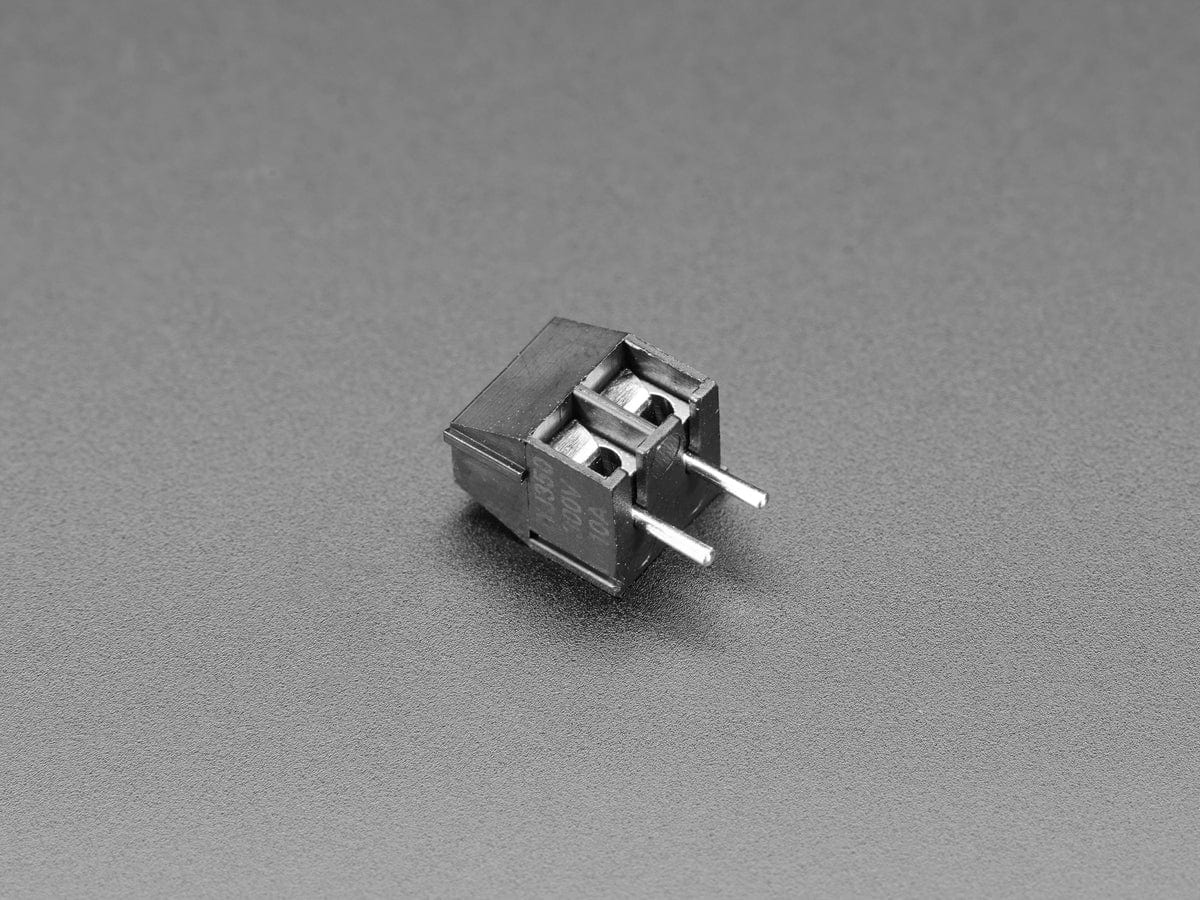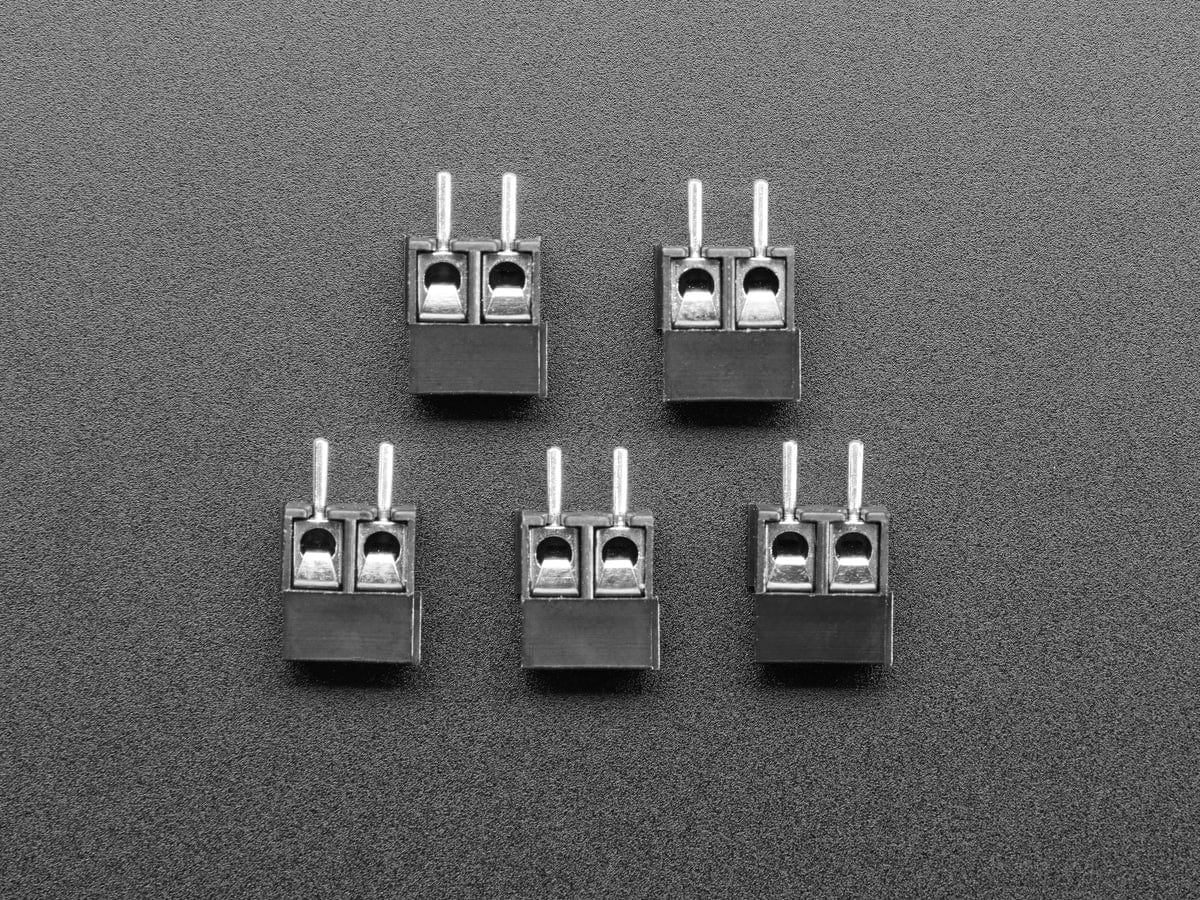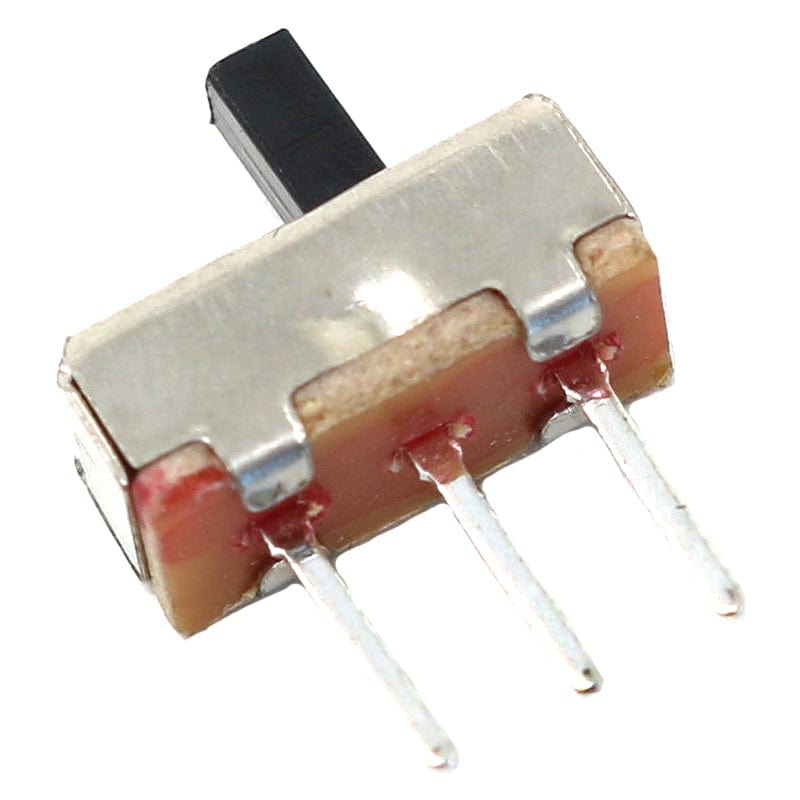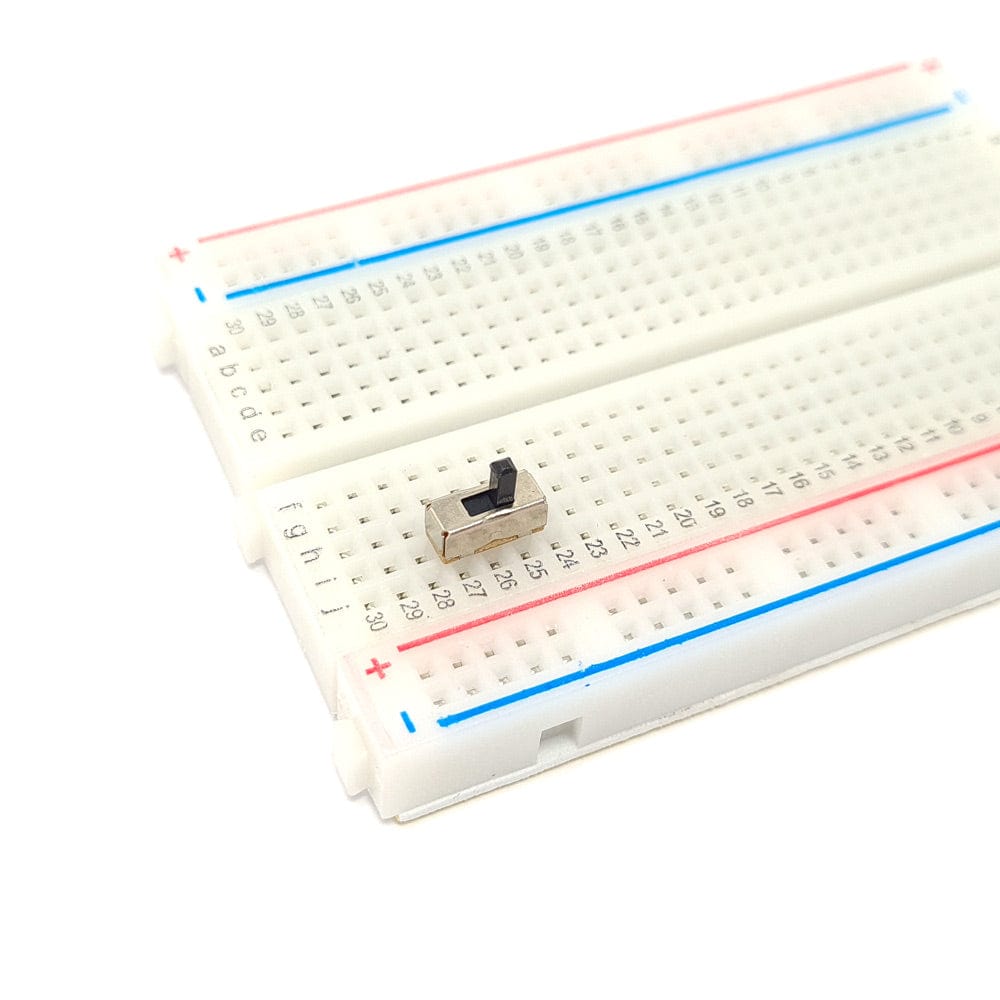
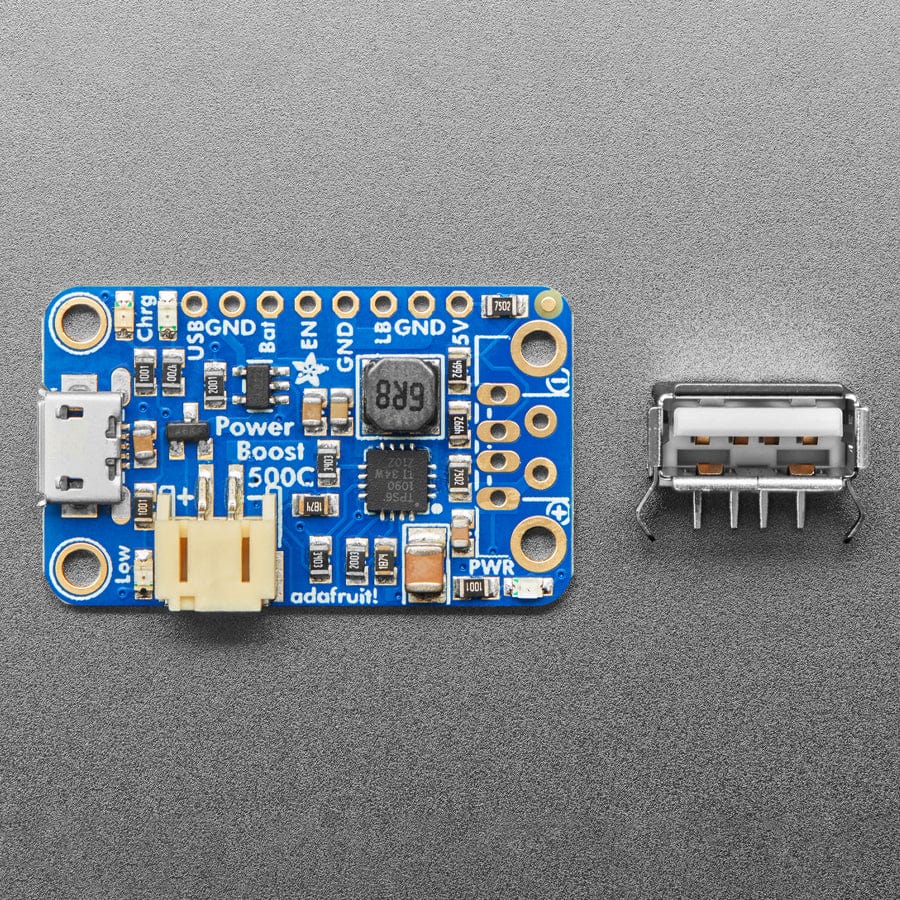
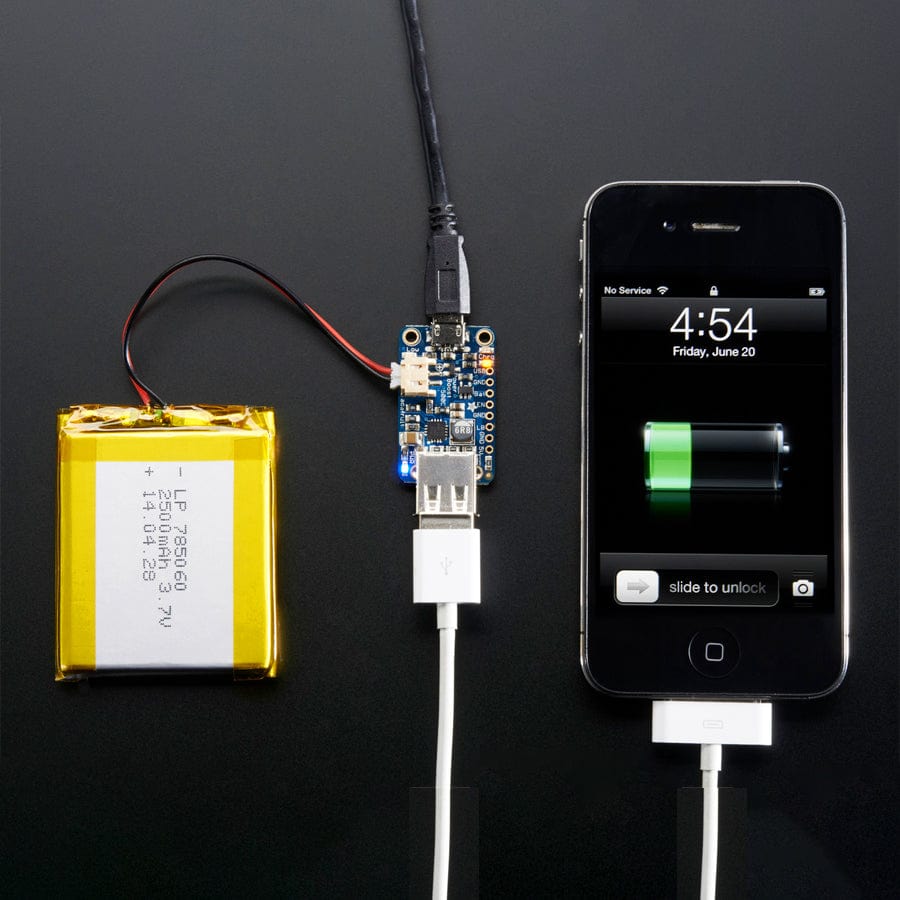
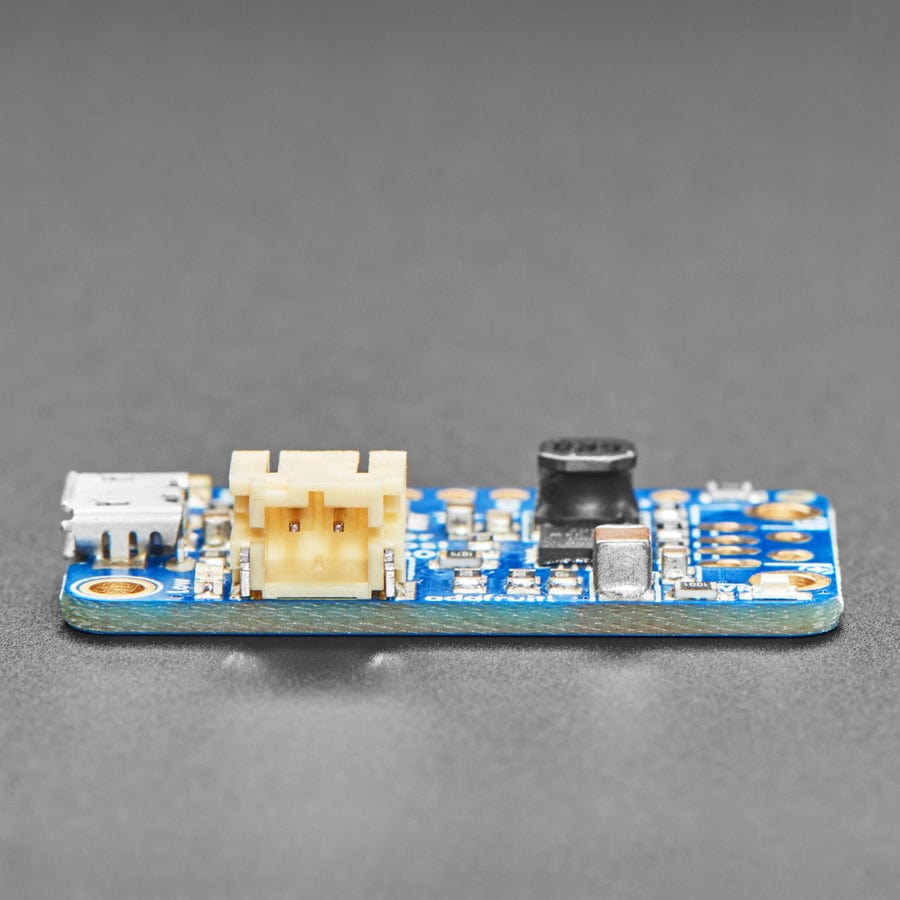
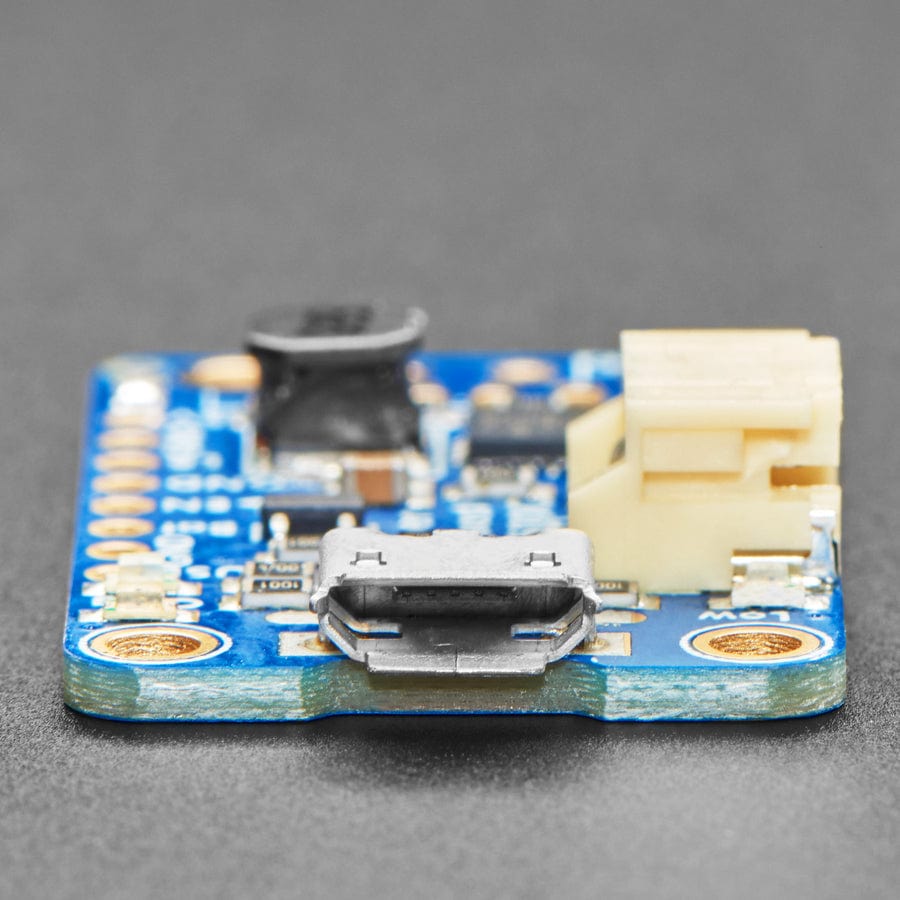

Overall product rating out of 5: 4.83
Based on 12 reviews
Write Review
Sort
Clear Filters
Order By
Newest First
Oldest First
Most Popular
Highest Rating
Breakdown
10
2
0
0
0
Product Reviews
PowerBoost 500 Charger - Rechargeable 5V Lipo USB Boost @ 500mA+
VERY USEFUL UNIT AND WELL SUPPORTED
Was this review helpful?
1 year ago
PowerBoost 500 Charger - Rechargeable 5V Lipo USB Boost @ 500mA+
Excellent gizmo for my LiPo powered project. Wired direct to the 5V and GND GPIO pins on Raspberry Pi Zero from the output pins of the PowerBoost - no need for the bulky USB connector. Option of adding a switch is also very useful.
Was this review helpful?
1 year ago
PowerBoost 500 Charger - Rechargeable 5V Lipo USB Boost @ 500mA+
Little gizmo worked a charm, used in to power a pi zero w in combination with a small lipo and the qi wireless charging receiver also sold here
Was this review helpful?
2 years ago
PowerBoost 500 Charger - Rechargeable 5V Lipo USB Boost @ 500mA+
Fantastic little board, which provides a stable 5V+ whilst there is over 500mA of current draw. The setup, form factor and functionality is all fantastic. Would highly recommend this product!
Was this review helpful?
2 years ago
PowerBoost 500 Charger - Rechargeable 5V Lipo USB Boost @ 500mA+
Used in a wildlife camera build to provide a easy way to recharge the battery.
Worked perfectly with no issues
Was this review helpful?
4 years ago
PowerBoost 500 Charger - Rechargeable 5V Lipo USB Boost @ 500mA+
Reviewer didn't leave any comments
Was this review helpful?
4 years ago
PowerBoost 500 Charger - Rechargeable 5V Lipo USB Boost @ 500mA+
Gooooood
Was this review helpful?
7 years ago
PowerBoost 500 Charger - Rechargeable 5V Lipo USB Boost @ 500mA+
I purchased one of these controllers to create a homemade UPS for my Raspberry Pi Zero W, works a charm. Connected a few 18650s up to the controller and powered the whole thing up and had no issues whatsoever. Only suggestion would be to make sure you solder the USB output connector onto the board before testing the unit, I thought I had a dud but once the connector was securely soldered on all my issues disappeared.
Was this review helpful?
7 years ago
1
2
New content loaded







